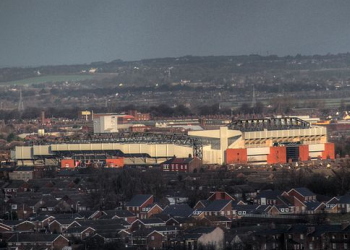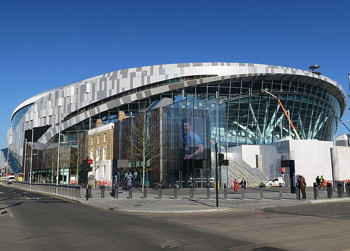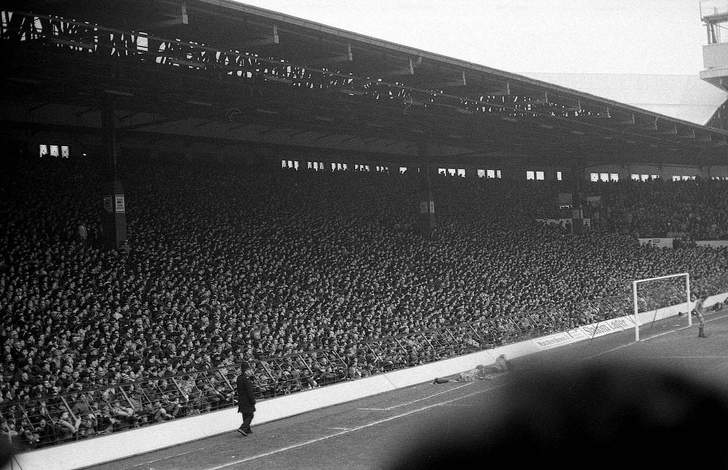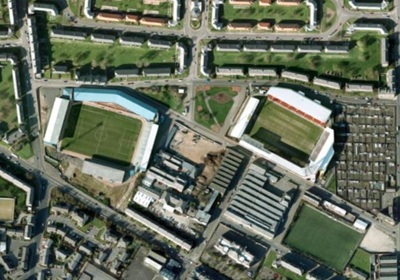
We’ve all grown accustomed to talking about football stadiums and when someone mentioned the term you’ll doubtless have an idea in your head of your favourite one. Anfield? Old Trafford? The new Wembley? Whether you refer to the place that football matches take place as a stadium or a football ground will also probably dictate how you feel about the matter.
The simple fact is that in England the term covers a gamut of different options. After all, if you’re heading into the 62,000 plus FA Cup you’ll have a different idea of what constitutes a stadium than a season ticket holder at AFC Wimbledon’s Kingsmeadow, which can house just shy of 5,000.
One of the beauties of the FA Cup is that it allows any club that is part of the Football Association of England to enter it, as long as they’re within the top 10 levels of English football. The problem with that, of course, is that not all football clubs are created equal and especially not when it comes to the stadiums that they call home.
The various football competitions in the UK therefore have rules and regulations regarding the minimum requirements that football grounds need to meet in order to be used for competitive matches within the tournament. Does that help us in identifying what, exactly, defines a football stadium?
The Dictionary Definition Of A Stadium
 Let’s start at the most obvious point, by looking in the dictionary. The word itself finds its origin in the Greek word ‘stadion’, which was a way of measuring a length equivalent to 600 feet. That’s not 600 feet in the modern sense of the word but literally human feet. Because of that they could differ dramatically depending on whose feet you were talking about. A Roman Stadion was about 607 foot but was measured in the terminology of the time, which was a passus.
Let’s start at the most obvious point, by looking in the dictionary. The word itself finds its origin in the Greek word ‘stadion’, which was a way of measuring a length equivalent to 600 feet. That’s not 600 feet in the modern sense of the word but literally human feet. Because of that they could differ dramatically depending on whose feet you were talking about. A Roman Stadion was about 607 foot but was measured in the terminology of the time, which was a passus.
Back then, of course, the stadiums being built were for for different events such as races. The oldest known stadium is the one in Olympia that played host to the ancient Olympic Games. Whilst it will have had a link to the stadion, the track was longer than the prescribed 600 feet.
The word as we know it today comes from the Latin ‘Stadium’. According to Merriam-Webster, one definition of the word is ‘a large usually roofless building with tiers of seats for spectators at sports events’. That’s far closer to what we understand the word to mean today.
The Modern Stadium

If you have a look at UEFA’s guidance on the matter then you’ll see that they refer to a stadium as a building that puts the needs of the supporters first. They should, say UEFA, ‘aim to serve the community at large’. UEFA being UEFA, though, can’t help but add a reference to the need to ‘maximise commercial potential’ via a range of both facilities and usage.
The site linked to above is aimed at those who are looking to commission or design a new stadium, so quite how much use it would have for the owners of Brisbane Road, which has room for less than 10,000 people, isn’t made clear. You can, however, explore the thoughts of the English Football League, who helpfully conflate ‘ground’ and ‘stadium’ at the start of their guide to Ground Regulations, saying:
“Ground” means this football stadium and all locations owned, occupied or utilised by the Club.
What we can say is that football stadiums are, to put it simply, where you go to watch matches being played. Again, the difference in the state of them depends entirely on the size and monetary value of the football club that calls them home, with those based in the Premier League clearly likely to offer significantly better facilities than non-league clubs.
What Makes A Stadium ‘Great’?

We’ll talk shortly about the actual rules that dictate what a football stadium should look like for professional teams plying their trade in the Football League, but before then it’s worth talking briefly about the things that matter to supporters when they’re talking about ‘great’ stadiums. After all, every club’s fans are going to love their home ground but everyone acknowledges that some are better than others.
In 2016 West Ham United moved from their former stadium of Upton Park to the London Stadium. Upton Park was, as any football supporter will tell you, a horrible place to go when the supporters were up for it. Stands close to the pitch made it an intimidating location to watch matches play out, meaning that many of the Hammers’ supporters didn’t want to move. They were especially unenthused by the fact that the London Stadium had been built to host the Olympic Games in 2012, meaning that it wasn’t built with football in mind.
That is an example of a venue that doesn’t work as a football stadium, with the majority of people being unhappy about it. It is an impressive looking arena, but that alone doesn’t make for a good place to place football. Another example of this would be the New Wembley, which opened in 2007 and has room for 90,000 people but is seen by many as being a soulless entity that struggles to generate any real atmosphere when it hosts football games.
Compare and contrast that with Anfield, which can only hold in the region of 54,000 fans but is seen as being a cauldron when those fans get behind their team, and you can see why the number of people that can fit inside a stadium isn’t enough alone to make it great.
According to Professor Murray Fraser of the Bartlett School of Architecture, a stadium’s link to the local community is one of the things that make it so important, which is why Anfield is seen as so quintessentially linked to the club that plays its games inside it. The houses are right next to it, fostering that sense of identity that other stadiums struggle to maintain.
Just as Anfield has the ability to power the team on to incredible achievements, such as when the overturned a 3-0 deficit to Barcelona in the semi-finals of the Champions League in 2019, so too was the opposite true of the Stadio delle Alpi where Juventus used to play their games. The poor sight lines combined with the athletic track that kept supporters separated both emotional and physically from the pitch meant that it remained unloved from the moment it opened until it was demolished 18 years later.
When you consider that the Estadio Municipal de Braga in Portugal is loved by those that watch matches there despite being located within the face of Monte Castro, it’s clear that there is something indefinable about what makes a stadium great and what doesn’t.
The Rules On Stadiums
 Depending on the league that a club plays its games in in England, there are specific rules that must be adhered to when it comes to whether or not matches are allowed to take place there.
Depending on the league that a club plays its games in in England, there are specific rules that must be adhered to when it comes to whether or not matches are allowed to take place there.
Heres a look at them as they stand at the time of writing:
- League Two: Must have a capacity of at least 5,000, of which 2,000 must be seated by the end of its third season in the division
- League One: As above
- Championship: Minimum requirement is 5,000 seated by year four of the club’s presence in the league
- Premier League: All-seater stadiums with undersoil heating as well as certain rules on floodlights, press office size and so on. At least 10% of the capacity should be for away supporters
When it comes to UEFA, there are more specific rules on what category each stadium will fit it into. For example, the minimum seated capacity for each category is as follows:
- Category 1: 200
- Category 2: 1,500
- Category 3: 4,500
- Category 4: 8,000
As with the Premier League, there are other much more specific requirements when it comes to the likes of the power of the floodlights, whether the turnstiles have to be electronic and the minimum number of VIP seats within each category.
When it comes to hosting major events, though, a stadium will need to have at least 30,000 seats to host the Europa League final and at least 60,000 for the Champions League final.
